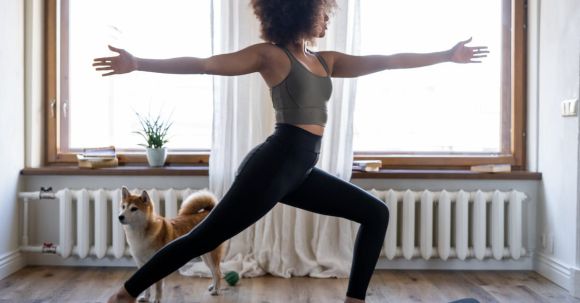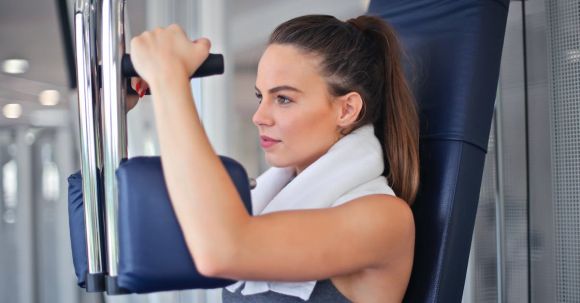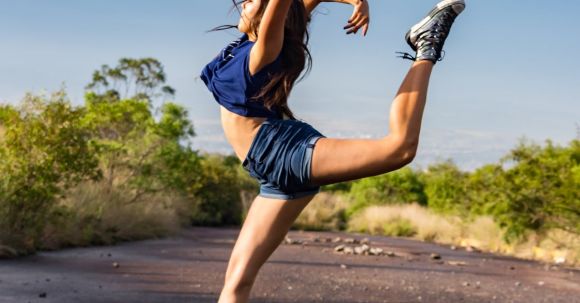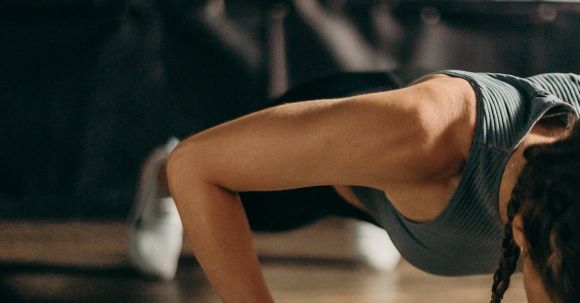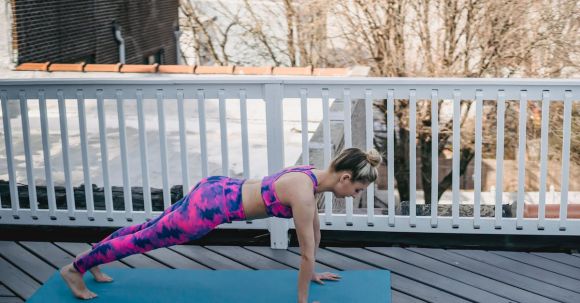In today's fitness landscape, there are countless options available to help us achieve a strong, flexible, and balanced body. Two popular choices that have gained significant attention in recent years are yoga and Pilates. Both practices offer a holistic approach to physical fitness and mental well-being, but they differ in their origins, techniques, and benefits. Let's dive into the world of yoga and Pilates to better understand what sets them apart and which one may be right for you.
The Origins:
Yoga, an ancient practice that originated in India, focuses on connecting the mind, body, and spirit. It incorporates a series of postures, breathing exercises, and meditation to achieve physical and mental harmony. On the other hand, Pilates, developed by Joseph Pilates in the early 20th century, emphasizes core strength, flexibility, and body alignment. It combines controlled movements with focused breathing and precise techniques to create a strong and stable body.
The Techniques:
Yoga encompasses a wide range of styles, from gentle and meditative practices like Hatha and Yin yoga to more dynamic and physically demanding styles like Vinyasa and Ashtanga. It encourages practitioners to listen to their bodies, find their edge, and honor their limitations. Pilates, on the other hand, focuses on specific movements that target the core muscles, including the abdominals, back, and pelvic floor. It often incorporates the use of equipment such as the reformer and the stability ball to enhance the effectiveness of the exercises.
The Benefits:
Both yoga and Pilates offer numerous benefits for the mind and body. Yoga promotes flexibility, strength, and balance while improving mental focus and reducing stress. It can also improve posture, increase lung capacity, and enhance overall body awareness. Pilates, on the other hand, helps improve core strength, stability, and posture. It can also alleviate back pain, enhance athletic performance, and improve body alignment.
Choosing the Right Practice for You:
When it comes to choosing between yoga and Pilates, there is no one-size-fits-all answer. It ultimately depends on your personal preferences, fitness goals, and physical condition. If you're looking for a practice that combines physical and spiritual elements, provides a sense of calm and relaxation, and offers a wide variety of styles to choose from, yoga may be the perfect fit for you. On the other hand, if you're primarily interested in developing core strength, improving body alignment, and focusing on precise movements, Pilates may be the better choice.
It's also worth considering your individual needs and limitations. If you have a specific injury or health condition, it's important to consult with a qualified instructor who can tailor the practice to your needs. Additionally, it's always beneficial to try out different classes and styles to see which one resonates with you the most. Some individuals may find that a combination of both yoga and Pilates provides the perfect balance of strength, flexibility, and mindfulness.
Join the Fit on Battle:
The battle of yoga versus Pilates ultimately comes down to personal preference and what your body needs. Both practices offer unique benefits and can help you achieve a stronger, more flexible, and balanced body. Whether you choose to flow through yoga sequences or focus on precise Pilates movements, the most important thing is to find a practice that you enjoy and that supports your overall well-being. So, join the fit on battle and embark on a journey of self-discovery, strength, and inner peace.
Author: fit-on
Are you ready to take your fitness to the next level? Do you want to improve your endurance and challenge yourself in a fun and exciting way? Look no further than the Fit on Cycling Challenge! This incredible event is designed to help you build your endurance and push your limits on the bike. Get ready to pedal your way to a fitter, stronger you!
Why Cycling?
Cycling is a fantastic way to improve your cardiovascular fitness and build endurance. It is a low-impact exercise that is suitable for people of all ages and fitness levels. Whether you are a beginner or an experienced cyclist, the Fit on Cycling Challenge is the perfect opportunity to push yourself and take your fitness to new heights.Challenge Yourself
The Fit on Cycling Challenge is not just a regular bike ride. It is a true test of endurance and mental strength. The challenge involves completing a series of long-distance rides over a specified period of time. Each ride will be progressively longer, allowing you to gradually build your endurance and improve your fitness.Train Smart
To successfully complete the Fit on Cycling Challenge, it is important to train smart. This means following a structured training plan that includes both on-bike workouts and off-bike exercises. Cross-training activities such as strength training and yoga can help improve your overall fitness and prevent overuse injuries.Stay Motivated
Staying motivated is key to any fitness challenge. Surround yourself with like-minded individuals who share your passion for cycling. Join a local cycling group or find a training partner who can help keep you accountable. Setting goals and tracking your progress can also help keep you motivated throughout the challenge.Fuel Your Body
Proper nutrition is essential for building endurance and staying energized during the Fit on Cycling Challenge. Make sure to consume a balanced diet that includes a mix of carbohydrates, proteins, and healthy fats. Stay hydrated by drinking plenty of water before, during, and after your rides. Consider working with a nutritionist or dietitian to optimize your nutrition for maximum performance.Enjoy the Journey
While the Fit on Cycling Challenge is a test of endurance, it is also an opportunity to explore new routes and enjoy the beauty of the outdoors. Take the time to appreciate the scenery and embrace the sense of accomplishment that comes with each completed ride. Remember, the journey itself is just as important as the destination.The Benefits of Building Endurance
Building endurance through the Fit on Cycling Challenge has numerous benefits beyond improved fitness. Endurance training can help increase your stamina, allowing you to perform better in other activities and sports. It can also improve your mental resilience and help reduce stress. Additionally, cycling is a great way to burn calories and lose weight, making it an excellent choice for those looking to shed some extra pounds.Conclusion: Embrace the Challenge
The Fit on Cycling Challenge is a fantastic opportunity to build your endurance and improve your fitness. By participating in this challenge, you will not only push yourself physically but also mentally. Embrace the challenge, stay motivated, and enjoy the journey. Get ready to pedal your way to a fitter, stronger you!
Every athlete knows that in order to excel in their chosen sport, they need to push their bodies to the limits. While general fitness training is important, sports-specific training is the key to unlocking your full potential. By tailoring your workouts to mimic the movements and demands of your sport, you can take your athleticism to the next level. In this article, we will explore the benefits of sports-specific training and provide tips on how to incorporate it into your routine.
Understanding the Benefits of Sports-specific Training
Sports-specific training is designed to enhance the specific skills and physical attributes required for a particular sport. By focusing on the specific movements, energy systems, and muscle groups used in your sport, you can improve your performance and reduce the risk of injury. Here are some key benefits of sports-specific training: 1. Improved Performance: By training the movements and skills specific to your sport, you can enhance your performance on the field or court. For example, a basketball player may focus on agility drills, vertical jumps, and shooting techniques to improve their game. 2. Injury Prevention: Sports-specific training helps to strengthen the muscles and joints used in your sport, reducing the risk of common injuries. By targeting weak areas and improving flexibility, you can enhance your body's ability to withstand the demands of your sport. 3. Enhanced Power and Speed: Sports-specific training can help you develop explosive power and speed, which are crucial in many sports. By incorporating exercises that mimic the quick bursts of movement required in your sport, you can improve your reaction time and overall speed.Incorporating Sports-specific Training into Your Routine
Now that you understand the benefits, it's time to incorporate sports-specific training into your routine. Here are some tips to get you started: 1. Analyze Your Sport: Take the time to analyze your sport and identify the specific skills, movements, and energy systems required. This will help you tailor your training program to focus on these areas. 2. Consult a Coach or Trainer: If you're unsure how to design a sports-specific training program, consider consulting a coach or trainer who specializes in your sport. They can provide guidance and create a customized plan based on your goals and abilities. 3. Mimic Sport-specific Movements: Incorporate exercises that mimic the movements used in your sport. For example, a golfer may focus on rotational exercises to improve their swing, while a soccer player may incorporate drills that simulate game situations. 4. Include Strength and Conditioning: While sports-specific movements are important, don't neglect overall strength and conditioning. Include exercises that target the major muscle groups and improve cardiovascular fitness to support your sport-specific training. 5. Progression and Variation: As with any training program, it's important to gradually increase the intensity and vary the exercises to continue challenging your body. This will prevent plateaus and keep your training sessions interesting.Conclusion: Elevate Your Performance with Sports-specific Training
If you're serious about taking your athleticism to the next level, sports-specific training is a must. By tailoring your workouts to mimic the movements and demands of your sport, you can improve your performance, reduce the risk of injury, and enhance your overall athletic abilities. Take the time to analyze your sport, consult a coach or trainer, and incorporate sport-specific movements into your routine. With dedication and consistency, you'll be well on your way to reaching new heights in your athletic journey.
Staying fit and healthy is essential for overall well-being. However, with our busy schedules and increasing demands, finding time to go to the gym or attend fitness classes can be challenging. The good news is that you don't need a gym membership or fancy equipment to get fit. With a few simple adjustments and a bit of creativity, you can achieve your fitness goals from the comfort of your own home.
Create a Dedicated Workout Space
Before you begin your home fitness journey, it's important to set up a dedicated workout space. This can be a spare room, a corner of your living room, or even your backyard. Clear out any clutter and make sure you have enough space to move around comfortably. Having a designated area will help you stay focused and motivated during your workouts.Find Online Fitness Classes
Thanks to the digital age, there is a vast array of online fitness classes available at your fingertips. From yoga and pilates to HIIT and dance workouts, there is something for everyone. Many fitness professionals and studios offer live-streamed classes or pre-recorded sessions that you can follow along with. These classes provide the guidance and structure you need to stay motivated and ensure you're performing exercises correctly.Utilize Bodyweight Exercises
When it comes to working out at home, bodyweight exercises are your best friend. These exercises use your own body weight as resistance, eliminating the need for expensive equipment. Push-ups, squats, lunges, planks, and burpees are just a few examples of bodyweight exercises that target multiple muscle groups. They can be modified to suit your fitness level, making them accessible for beginners and advanced individuals alike.Incorporate Household Items
If you're looking to add some variety to your home workouts, look no further than your own household items. Use a chair for tricep dips, a towel for sliding lunges, or a water bottle for weighted exercises. Get creative and think outside the box – you'll be surprised at how many everyday items can be repurposed as workout equipment.Stay Active Throughout the Day
Being active doesn't always mean following a structured workout routine. Finding ways to incorporate movement into your daily routine can make a significant difference in your overall fitness. Take breaks from sitting by going for a walk or doing a quick stretch. Use the stairs instead of the elevator. Dance while doing household chores. Every little bit adds up and helps you stay active throughout the day.Stay Accountable
One of the challenges of working out at home is staying accountable. Without the social aspect of a gym or fitness class, it can be easy to skip workouts or lose motivation. To combat this, find an accountability partner. This can be a friend, family member, or even an online fitness community. Share your goals, progress, and challenges with them. Knowing that someone is cheering you on and holding you accountable can make a world of difference.Conclusion: Embrace the Convenience
Getting fit from the comfort of your own home doesn't have to be a daunting task. By creating a dedicated workout space, finding online fitness classes, incorporating bodyweight exercises and household items, staying active throughout the day, and finding an accountability partner, you can achieve your fitness goals without stepping foot outside. Embrace the convenience and flexibility of home workouts and start prioritizing your health and well-being today.
When it comes to burning calories and shedding those extra pounds, cardio exercises are the way to go. Cardiovascular exercises elevate your heart rate and increase your breathing, helping you burn more calories in a shorter amount of time. In this article, we will explore some of the best cardio exercises that can help you achieve your weight loss goals.
Running
Running is a classic cardio exercise that is not only effective but also convenient. All you need is a good pair of running shoes and you're ready to go. Whether you choose to run outdoors or on a treadmill, running can help you burn a significant amount of calories in a short period of time. Plus, it strengthens your leg muscles and improves your cardiovascular endurance.Cycling
Cycling is another excellent cardio exercise that can help you burn calories and strengthen your lower body. Whether you choose to ride a stationary bike at the gym or cycle outdoors, this low-impact exercise is perfect for people of all ages and fitness levels. Cycling not only burns calories but also helps improve your balance and coordination.Jumping Rope
Jumping rope is a fun and effective cardio exercise that can be done almost anywhere. Not only does it burn calories, but it also engages multiple muscle groups, including your arms, shoulders, and legs. Jumping rope is a high-intensity exercise that can help improve your cardiovascular endurance and coordination. Plus, it requires minimal equipment and can be easily incorporated into your workout routine.Swimming
Swimming is a low-impact, full-body workout that can help you burn a significant amount of calories. It engages all major muscle groups and provides a great cardiovascular workout. Whether you choose to swim laps or participate in a water aerobics class, swimming is a refreshing and effective way to burn calories and improve your overall fitness.High-Intensity Interval Training (HIIT)
High-Intensity Interval Training, or HIIT, is a type of cardio exercise that involves short bursts of intense exercise followed by brief periods of rest. This type of workout not only burns calories during the exercise but also continues to burn calories even after you've finished. HIIT can be done with a variety of exercises, such as running, cycling, or bodyweight exercises, and is a time-efficient way to maximize calorie burn.Dancing
Dancing is a fun and enjoyable way to burn calories and improve your cardiovascular health. Whether you choose to take a Zumba class, participate in a dance fitness video, or simply dance around your living room, dancing can be a great cardio workout. It not only burns calories but also improves coordination, balance, and flexibility.Rowing
Rowing is a full-body cardio exercise that engages multiple muscle groups, including your arms, legs, and core. Whether you choose to row on a rowing machine at the gym or rowing on the water, this low-impact exercise is a great way to burn calories and improve your cardiovascular fitness. Rowing also provides a great upper body workout and helps improve posture. In conclusion, there are many different cardio exercises that can help you burn calories and achieve your weight loss goals. Whether you prefer running, cycling, jumping rope, swimming, HIIT, dancing, or rowing, incorporating these exercises into your routine can help you burn calories, improve your cardiovascular health, and reach your fitness goals. So, lace up your shoes, jump on your bike, or hit the dance floor, and start burning those calories today!
In a world obsessed with quick fixes and instant results, it can be challenging to find a weight loss method that truly stands the test of time. With fad diets and trendy workout routines constantly flooding the market, it's no wonder that many people struggle to maintain a healthy weight in the long run. However, there is a secret to achieving long-lasting weight loss that goes beyond the latest diet craze or fitness fad. This secret lies in making sustainable lifestyle changes that promote overall health and well-being. In this article, we will explore the keys to successful and sustainable weight loss.
1. Mindful Eating: The Foundation of Long-lasting Weight Loss
The first step towards achieving long-lasting weight loss is adopting a mindful eating approach. This means paying attention to the food we eat, listening to our body's hunger and fullness cues, and being aware of the emotional factors that influence our eating habits. By practicing mindful eating, we can develop a healthier relationship with food and make better choices that support our weight loss goals.2. Regular Exercise: Moving Your Way to Success
Physical activity is not only essential for weight loss but also for maintaining overall health and well-being. Regular exercise helps to burn calories, build muscle, and increase metabolism. It is important to find an exercise routine that you enjoy and can stick to in the long term. Whether it's going for a run, practicing yoga, or joining a dance class, finding an activity that brings you joy will make it easier to stay motivated and committed to your weight loss journey.3. Setting Realistic Goals: The Key to Long-term Success
Setting realistic goals is crucial when it comes to achieving long-lasting weight loss. Instead of aiming for a quick fix or an unrealistic body image, focus on making small, achievable changes that will lead to sustainable results. By setting realistic goals, you can avoid feelings of frustration and disappointment, and instead, celebrate each small victory along the way.4. Building a Support System: Strength in Numbers
Having a strong support system is essential for long-lasting weight loss. Surrounding yourself with like-minded individuals who are also on a weight loss journey can provide motivation, accountability, and encouragement. Whether it's joining a support group, finding a workout buddy, or seeking guidance from a professional, having a support system can make all the difference in achieving and maintaining your weight loss goals.5. Consistency: The Secret Ingredient
Consistency is the secret ingredient to long-lasting weight loss. It's not about following a strict diet for a short period of time, but rather making sustainable lifestyle changes that you can maintain in the long run. Consistency in healthy eating habits, regular exercise, and self-care practices will help you maintain your weight loss and prevent the weight from coming back. In conclusion, long-lasting weight loss is not achieved through quick fixes or trendy fads. It requires a mindful approach to eating, regular exercise, setting realistic goals, building a support system, and above all, consistency. By adopting these principles into your lifestyle, you can discover the secret to achieving and maintaining a healthy weight for years to come. Remember, it's not just about the number on the scale, but about living a balanced and fulfilling life.
Muscle tension and soreness can be a common issue for many people, whether it's from physical activity, stress, or even just poor posture. The good news is, there are several effective ways to relieve muscle tension and soreness. In this article, we will explore some helpful tips that can help you find relief and get back to feeling your best.
Stretching and Flexibility Exercises
One of the most effective ways to relieve muscle tension and soreness is through stretching and flexibility exercises. Stretching helps to improve blood flow to the muscles, which can help reduce tension and promote relaxation. It is important to stretch properly and avoid bouncing or overstretching, as this can lead to injury. Instead, focus on gentle, slow stretches and hold each stretch for at least 30 seconds.Massage and Foam Rolling
Massage therapy is another great option for relieving muscle tension and soreness. A professional massage can help relax tight muscles and improve circulation, promoting healing and reducing pain. If you don't have access to a massage therapist, foam rolling can be a helpful alternative. Foam rolling involves using a foam roller to apply pressure to specific areas of tension or soreness. This can help break up knots in the muscles and improve flexibility.Heat and Cold Therapy
Heat and cold therapy can also be effective in relieving muscle tension and soreness. Applying heat to tense muscles can help increase blood flow and relax the muscles. You can use a heating pad, warm towel, or take a warm bath or shower to help relieve muscle tension. On the other hand, cold therapy can help reduce inflammation and numb the area, providing temporary relief from soreness. You can apply an ice pack or a bag of frozen vegetables to the affected area for about 15-20 minutes.Proper Posture and Ergonomics
Poor posture and ergonomics can contribute to muscle tension and soreness. Sitting or standing in a slouched position for long periods of time can put strain on the muscles and lead to discomfort. It is important to maintain proper posture and ergonomics throughout the day. Make sure your workspace is set up correctly, with your chair at the right height and your computer monitor at eye level. Take frequent breaks to stretch and change positions to avoid muscle tension and soreness.Stay Hydrated and Eat a Balanced Diet
Staying hydrated and eating a balanced diet can also play a role in relieving muscle tension and soreness. Dehydration can lead to muscle cramps and tightness, so it is important to drink enough water throughout the day. Additionally, eating a diet rich in fruits, vegetables, and lean proteins can provide the necessary nutrients for proper muscle function and recovery.Manage Stress
Stress can contribute to muscle tension and soreness. Finding healthy ways to manage stress can help reduce muscle tension and promote relaxation. Engaging in activities such as yoga, meditation, or deep breathing exercises can help calm the mind and relax the muscles. Additionally, getting enough sleep and practicing good sleep hygiene can also help reduce stress and promote muscle recovery. Incorporating these tips into your daily routine can help relieve muscle tension and soreness, allowing you to move and function more comfortably. Remember to listen to your body and seek professional help if the pain or discomfort persists. By taking care of your muscles, you can improve your overall well-being and enjoy a pain-free, active lifestyle.
When it comes to staying fit and healthy, finding a workout routine that you enjoy is key. Dance workouts have gained popularity in recent years, and for good reason. They not only provide a fun and energetic way to get moving, but they also offer a multitude of benefits for both the body and mind. Incorporating dance workouts into your fitness routine can have a positive impact on your overall well-being.
Improved Cardiovascular Health
One of the major benefits of dance workouts is the improvement in cardiovascular health. Dancing involves continuous movement, which increases your heart rate and gets blood pumping throughout your body. This helps to strengthen your heart, improve circulation, and increase your lung capacity. Regular dance workouts can lower your risk of heart disease, improve your stamina, and boost your overall cardiovascular fitness.Increased Muscle Tone and Strength
Dance workouts are not only great for cardiovascular health, but they also help to tone and strengthen your muscles. Different dance styles target different muscle groups, providing a full-body workout. Whether you're doing salsa, hip hop, or ballet, you'll be engaging your core, legs, arms, and back muscles. Over time, this can lead to improved muscle tone and increased strength. Plus, dancing is a weight-bearing exercise, which can help to prevent osteoporosis and improve bone density.Enhanced Flexibility and Balance
Flexibility and balance are two important components of fitness that often get overlooked. However, dance workouts can help to improve both. The dynamic movements and stretches involved in dancing can increase your flexibility and range of motion. This can help to prevent injuries and improve your performance in other physical activities. Additionally, dance workouts require coordination and body control, which can enhance your balance and stability.Stress Relief and Mood Boosting
Exercise, in general, is known to release endorphins, which are the body's natural mood-boosting chemicals. Dance workouts take this to the next level with their lively and upbeat nature. Dancing allows you to let loose, have fun, and express yourself through movement. This can help to reduce stress, anxiety, and depression. It's a great way to release pent-up energy and improve your overall mental well-being.Social Interaction and Community
Another benefit of incorporating dance workouts into your fitness routine is the social aspect. Dance classes and group workouts provide an opportunity to meet new people, make friends, and become part of a community. This social interaction can be motivating and enjoyable, making it easier to stick to your fitness goals. Dancing with others also adds an element of camaraderie and support, which can make the workout experience even more rewarding.Tips for Incorporating Dance Workouts into Your Routine
If you're interested in incorporating dance workouts into your fitness routine, there are a few tips to keep in mind. First, start with a style of dance that you enjoy or have always wanted to try. This will make the experience more enjoyable and increase your chances of sticking with it. Second, consider taking a dance class or joining a dance fitness group. This will provide structure, guidance, and the opportunity to learn new moves. Lastly, remember to warm up before each dance session and cool down afterward to prevent injury and promote recovery. In conclusion, dance workouts offer a multitude of benefits for both the body and mind. From improved cardiovascular health and increased muscle tone, to enhanced flexibility and balance, dance workouts provide a fun and effective way to stay fit. They also offer stress relief, mood-boosting effects, and the opportunity for social interaction and community. So why not put on your dancing shoes and start incorporating dance workouts into your fitness routine? Your body and mind will thank you.
When it comes to achieving your fitness goals, one size does not fit all. Each person has unique needs and abilities, and it's important to tailor your workouts accordingly. Customized workouts are designed to meet your specific fitness level, helping you make progress while minimizing the risk of injury. Whether you're a beginner or an experienced athlete, here's how you can create a workout plan that suits your needs.
Assessing Your Fitness Level
Before you start any workout program, it's essential to assess your current fitness level. This will help you determine where you stand and what areas you need to focus on. A fitness assessment may include measuring your body composition, testing your cardiovascular endurance, and evaluating your strength and flexibility. By understanding your starting point, you can set realistic goals and track your progress along the way.Designing a Beginner's Workout
If you're new to exercise or have been inactive for a while, it's important to start slowly and gradually increase the intensity of your workouts. A beginner's workout should focus on building a foundation of strength, improving cardiovascular fitness, and enhancing flexibility. Incorporate activities such as walking, light resistance training, and gentle stretching into your routine. Aim for at least 30 minutes of exercise most days of the week, but listen to your body and take rest days as needed.Progressing to Intermediate Workouts
Once you've built a solid foundation, you can progress to intermediate workouts that challenge your body and promote further improvement. Intermediate workouts should include a combination of strength training, cardiovascular exercise, and flexibility work. Increase the intensity and duration of your workouts gradually to avoid overexertion. Consider incorporating interval training, circuit training, and more advanced strength exercises to keep your body guessing and prevent plateaus.Advanced Workouts for Seasoned Athletes
For those who have been consistently exercising for an extended period and have a high level of fitness, advanced workouts are the way to go. These workouts are designed to push your limits, improve performance, and achieve specific fitness goals. Advanced workouts may include high-intensity interval training, heavy weightlifting, plyometrics, and advanced yoga poses. However, it's crucial to prioritize proper form and listen to your body to prevent injuries.Modifying Workouts for Special Considerations
Customized workouts also account for any special considerations or limitations you may have. If you have a pre-existing medical condition or injury, it's essential to consult with a healthcare professional or a qualified fitness trainer to ensure your workouts are safe and effective. They can help modify exercises, suggest alternatives, or recommend specific exercises that target your needs. Remember, everyone's journey is unique, and it's important to listen to your body and make adjustments as necessary.Staying Motivated and Consistent
Creating a customized workout plan is just the first step. To achieve your fitness goals, it's important to stay motivated and consistent with your workouts. Find activities you enjoy, set realistic goals, and track your progress along the way. Consider working out with a partner or hiring a personal trainer for added accountability and support. Most importantly, listen to your body and make adjustments as needed to avoid burnout or injury. In conclusion, customized workouts are essential for every fitness level. By assessing your fitness level, designing workouts that suit your needs, and modifying exercises for special considerations, you can create a plan that helps you reach your goals while staying safe. Remember to stay motivated, consistent, and always prioritize your health and well-being.
A strong and defined core is the foundation for a healthy body and proper posture. Many people believe that achieving a toned core requires expensive gym memberships or fancy equipment. However, the truth is that you can effectively tone your core right in the comfort of your own home. In this article, we will explore a variety of home workout exercises that target your core muscles and help you achieve the results you desire.



